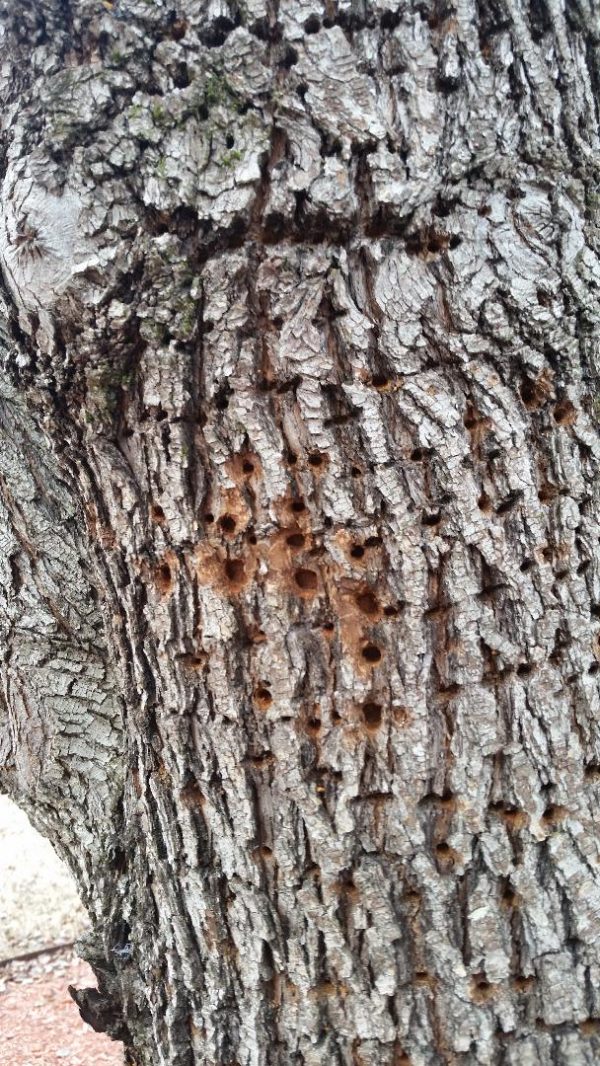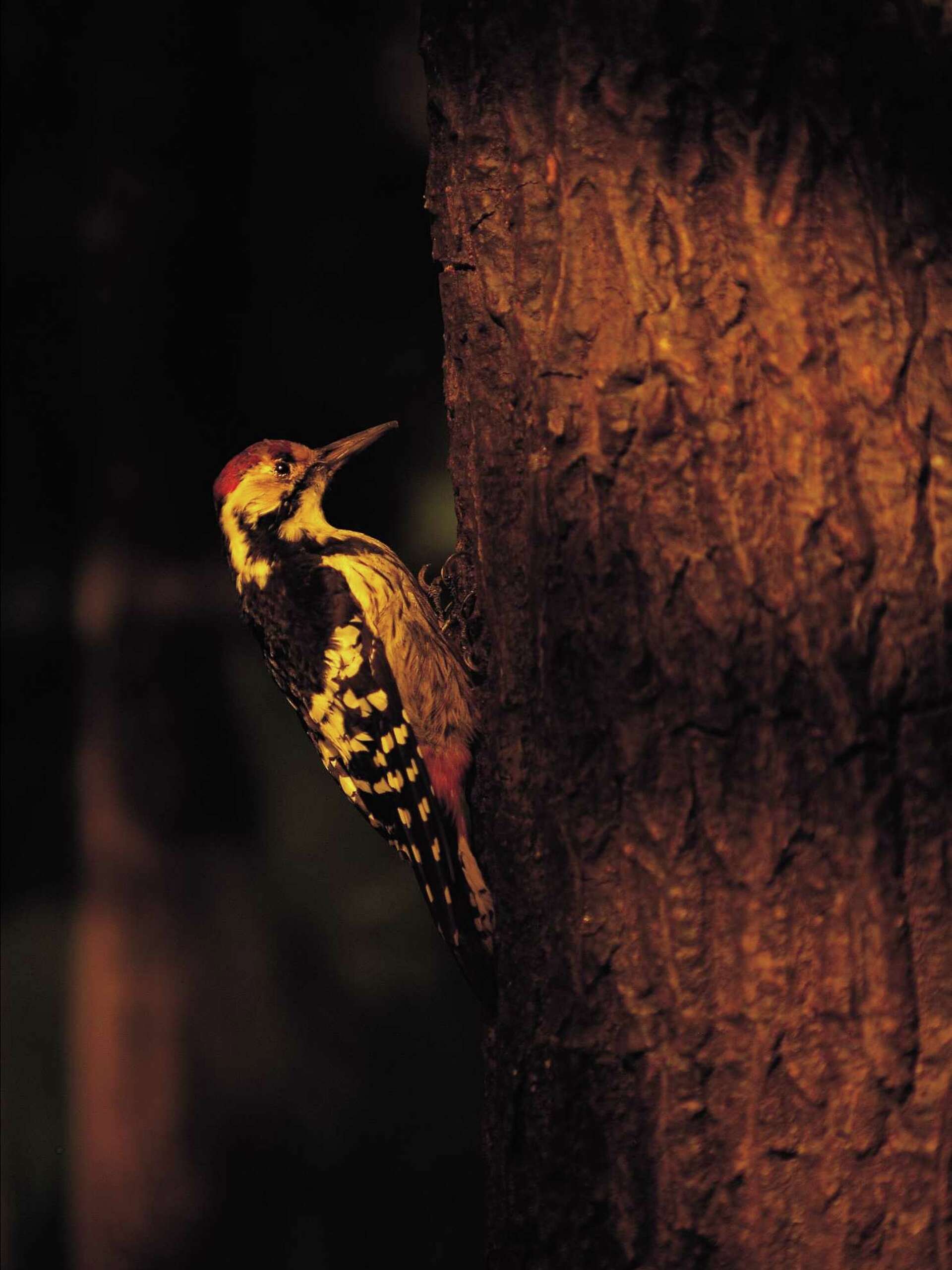Getting rid of sapsuckers can be quite a challenge. These little birds can cause big damage to trees.
But don’t worry, there are effective ways to deal with them. Sapsuckers are a type of woodpecker that love to drill holes in trees. They do this to drink the sap and eat the insects trapped in it. While it might seem harmless, this behavior can seriously harm trees.
The repeated drilling can weaken the tree, making it susceptible to disease and pests. In this blog post, we’ll explore practical solutions to keep these pesky birds away from your trees, ensuring they stay healthy and strong. Whether you’re a gardener, homeowner, or nature enthusiast, these tips will help you protect your precious greenery.

Credit: www.walterreeves.com
Identifying Sapsuckers
Identifying sapsuckers is the first step in dealing with them. These birds peck at trees and cause damage. Knowing their types and how they look helps in managing them effectively.
Common Species
There are a few common species of sapsuckers. The Yellow-bellied Sapsucker is the most well-known. It has a range across North America. The Red-naped Sapsucker is another common type. It is found in the western parts of the continent. The Red-breasted Sapsucker lives along the Pacific coast. Each species has unique habits and patterns.
Physical Characteristics
Sapsuckers have some distinct physical features. They have a medium-sized body. Their feathers are often colorful. The Yellow-bellied Sapsucker has a yellow belly and a red forehead. The Red-naped Sapsucker has a red patch on its neck. The Red-breasted Sapsucker has a bright red head and chest. These birds also have strong, chisel-like beaks. Their feathers often have black and white patterns.

Credit: www.weekand.com
Damage Caused By Sapsuckers
Sapsuckers are a type of woodpecker that can cause significant damage to trees. Their feeding habits create holes in tree bark, which can lead to several problems. Understanding the damage they cause is crucial for effective control and prevention.
Tree Health Impact
Sapsuckers drill rows of small holes in tree trunks. These holes can disrupt the flow of sap. When sap flow is disrupted, trees cannot transport nutrients effectively. This weakens the tree over time. It makes trees more vulnerable to disease and pests. In severe cases, it can lead to the tree’s death.
Economic Consequences
The damage caused by sapsuckers can have economic implications. Property owners may need to spend money on tree care and treatments. In orchards, weakened trees produce less fruit. This can lead to a decrease in crop yields and profits. Forest industries also face losses due to damaged timber. Repairing or replacing affected trees can be costly.
Preventing Sapsucker Infestation
Preventing sapsucker infestation is crucial to protect your trees. These birds drill small holes in tree bark to feed on sap. This can harm your trees over time. Taking steps to stop them early is important.
Protective Barriers
Using protective barriers can help keep sapsuckers away. Wrap your tree trunks with hardware cloth or plastic mesh. Ensure the barrier is tight around the tree. This prevents birds from accessing the bark. Check the barriers regularly. This ensures they stay intact and effective.
Repellent Techniques
Repellent techniques can also deter sapsuckers. Use visual deterrents like reflective tape or shiny objects. These can scare the birds away. Hang them around the affected trees. Sound deterrents like wind chimes can also help. These create noise that sapsuckers dislike.
Another method is using taste repellents. Apply a sticky, non-toxic substance to the bark. This makes the surface unpleasant for the birds. Always follow product instructions to ensure safety for the tree.
Non-lethal Deterrents
Do sapsuckers damage your trees? Non-lethal deterrents can help. These methods protect your trees without harming the birds. Try visual scare tactics and sound-based methods.
Visual Scare Tactics
Use shiny objects to scare sapsuckers. Hang aluminum foil strips or old CDs. Their reflections create movement that scares birds away. You can also try colorful pinwheels. They spin in the wind and deter birds.
Another option is bird scare tape. This tape flutters in the breeze and makes a crackling sound. It is very effective at keeping sapsuckers away. Place the tape around the areas they frequent most.
Sound-based Methods
Sound-based methods work well too. Install a motion-activated noise maker. These devices play loud sounds when birds come near. The sudden noise scares them off.
Another option is to play recordings of predator calls. Sapsuckers will avoid areas where they hear these sounds. You can find these recordings online. Play them at regular intervals for best results.
Natural Predators
Sapsuckers can cause damage to trees and plants in your garden. Nature has its own way of controlling these pests. Natural predators play a vital role. They help keep the sapsucker population in check. Let’s explore some of these natural predators.
Bird Species
Certain bird species are known to feed on sapsuckers. Woodpeckers are one such group. They are natural enemies of sapsuckers. Owls also prey on sapsuckers. Hawks are another predator. These birds help reduce the number of sapsuckers in your garden.
Insect Predators
Insects can also be effective against sapsuckers. Ladybugs are one example. They are known to consume sapsucker larvae. Another insect predator is the praying mantis. They are skilled hunters. They can capture and eat sapsuckers. Ants are also natural enemies of sapsuckers. They attack the larvae and eggs.
Using Chemical Repellents
Many people seek effective methods to get rid of sapsuckers. One common solution is using chemical repellents. These products can help deter sapsuckers from damaging your trees. They work by creating an unpleasant environment for the birds.
Safe Products
Choosing safe products is crucial. Look for repellents made specifically for birds. Avoid those harmful to pets or humans. Some popular options include bird repellent sprays and gels. Always read the label. Ensure the product is non-toxic.
Application Tips
Proper application ensures the repellent works effectively. Apply the product according to the instructions. Usually, you spray or spread it on the tree bark. Repeat the application every few weeks. This maintains its effectiveness.
Cover the affected areas thoroughly. Focus on spots where sapsuckers are active. Avoid applying too much. This can harm the tree. Monitor the tree regularly. Reapply as needed.
Tree Maintenance Practices
Sapsuckers can harm trees by drilling holes in the bark. Wrap tree trunks with burlap or plastic mesh to protect them. Paint trunks with a mixture of water and white latex paint to deter these birds.
Proper tree maintenance can help deter sapsuckers from causing damage. Healthy trees are less attractive to these birds. By maintaining trees, you reduce the chances of sapsucker infestations. Let’s explore two crucial tree maintenance practices.Pruning Techniques
Pruning trees regularly can make a big difference. Remove dead or weak branches. This helps the tree stay strong and healthy. Use clean, sharp tools for pruning. Cut branches at the right angle to avoid damage. This will encourage new growth and make the tree less appealing to sapsuckers.Wound Treatment
Treat tree wounds immediately to prevent sapsuckers from targeting them. Use a tree wound sealant to cover fresh cuts. This helps protect the tree from further damage. Inspect the tree often for new wounds. Quick treatment can save the tree from severe damage. Keep your trees healthy and less attractive to sapsuckers. “`
Credit: trueleafmarket.com
Long-term Solutions
Dealing with sapsuckers can be challenging, but there are effective long-term solutions to safeguard your trees. While immediate measures might provide temporary relief, adopting comprehensive strategies ensures lasting protection. Let’s delve into some proven long-term solutions for keeping these pesky birds at bay.
Habitat Management
One powerful method to deter sapsuckers is to manage their habitat. Start by understanding why they target certain trees. Sapsuckers often choose trees with soft bark or those already showing signs of stress.
Planting a variety of tree species can make your garden less attractive to sapsuckers. Diversification creates an environment where no single type of tree becomes a prime target. Additionally, consider pruning or removing trees that are heavily affected. This proactive approach can discourage sapsuckers from returning.
Have you ever noticed that sapsuckers avoid certain areas of your yard? Use this to your advantage. By strategically placing new trees in these locations, you can create a natural deterrent.
Monitoring And Adaptation
Constant monitoring is crucial for effective sapsucker management. Regularly inspect your trees for signs of sapsucker activity. Look for rows of small holes drilled into the bark, which can indicate their presence.
Adapting to changes in sapsucker behavior is essential. If you notice a sudden increase in activity, it might be time to adjust your strategies. For instance, installing physical barriers like tree wraps can protect the bark while you address the root cause.
Have you tried using non-toxic repellents? Some homeowners have found success with these products. They can be applied to affected areas to deter sapsuckers without harming the trees or other wildlife.
Engage with your local community to share insights and strategies. Have others faced similar challenges? Learning from their experiences can provide valuable tips and tricks.
By focusing on habitat management and consistent monitoring, you can create a long-term plan that keeps sapsuckers at bay. Which strategy will you try first?
Frequently Asked Questions
How Do You Treat A Tree With Sapsucker Damage?
To treat tree sapsucker damage, wrap the affected area with burlap or tree wrap. Apply wound dressing to prevent infection.
How To Get Rid Of Sapsucker Birds?
Use visual deterrents like shiny objects, scare tape, or predator decoys. Wrap trees with burlap or hardware cloth. Apply non-toxic bird repellents.
What Is The Difference Between A Woodpecker And A Sapsucker?
Woodpeckers peck wood to find insects and create nesting cavities. Sapsuckers drill holes in trees to feed on sap.
How To Get Rid Of A Persistent Woodpecker?
Install bird netting or reflective tape. Use decoys or scare devices. Apply non-toxic woodpecker repellent. Seal holes and crevices. Consult a wildlife expert if needed.
Conclusion
Getting rid of sapsuckers takes patience and the right methods. Use visual deterrents to keep them away. Regularly check your trees for new damage. Protecting your trees helps them stay healthy. Try different techniques to see what works best. Consistent efforts will ensure your trees thrive without sapsucker damage.
Keep learning and adapting your strategies. Your trees will thank you.
